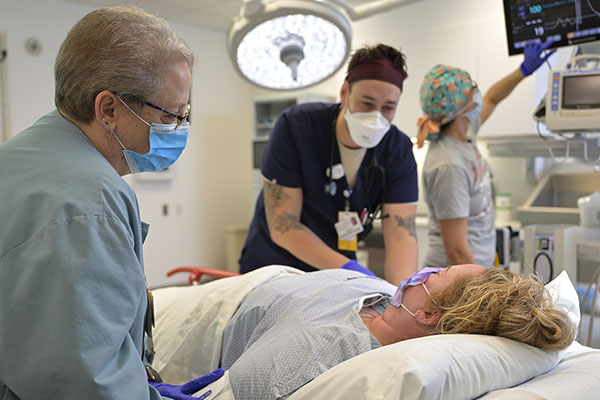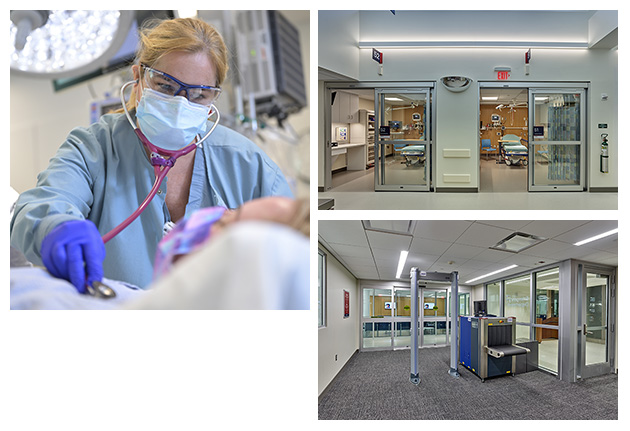
Chester County Hospital celebrated the completion of its three-year Emergency Department expansion and renovation project on February 24, 2022. The first patient was admitted to the new space at 7:15 AM. A 26,000-square-foot expansion of the department was completed last spring. Since then, the unit has been undergoing a renovation that occurred in phases to ensure patient access and care were not impacted.
With the closing of two area hospitals and the unpredictability of COVID, the final phase of expansion and renovation in Chester County Hospital's Emergency Department (ED) has positioned the unit to meet the growing demand for emergency services in Chester County, PA.
Darren Girardeau, MSN, BM, RN, PHRN, CCRN, CEN, director of Emergency Services at the hospital, said the clean lines and new streams of natural light had already helped lift morale among a staff that's endured a steady succession of construction-related obstacles to its daily workflow. This is on top of the demands of a pandemic that's entering its third year. "It's created a more pleasant environment for both our staff and patients," he says.
One isolation room, seven treatment rooms and two trauma bays round out this final phase of construction, bringing the total number of treatment areas in the unit to 43.
"The number of beds has been an issue for us not only because we're seeing more patients these days but also because the cases we treat, on average, have become more complex since we became a part of Penn Medicine," says Diana Kane, MD, FAAEM, chairperson and medical director of Emergency Medicine at the hospital. "We've become a stop for local patients who require highly specialized care or surgeries. Some, we admit and treat here. Others may be transferred to one of our sister hospitals."

Previously, the beds in the department were divided only by curtains. Now, each behind a closed door, which will helps enhance privacy and, Kane says, reduces the risk of infection.
The new department also features a less-centralized floorplan compared to the former unit. A single nurses' station has been replaced by multiple, smaller stations spaced throughout the department. "There's a definite flow about the department,” Kane says. “I think everyone feels more in touch, even if we’re more spread out than we've ever been."
The doctors occupy an all-glass office in the middle of the floor that they’ve dubbed "The Fishbowl". Within it, they have unobstructed views of all the resuscitation bays. Just as critically, the nurse's can easily see who's in The Fishbowl from almost anywhere on the floor, expediting the process of having a doctor review test results.
Additionally, enhanced security measures have been added to help with staff and patient safety. Since March 2020, the Emergency Department has been supervised by a security officer 24/7. Everyone who enters the department must also pass through a metal detector and an x-ray security screening. "Our staff felt much safer right from the start," Girardeau says. "And the majority of our patients have commented that they feel safer, too."
Most visitors will probably only ever notice the more spacious waiting area (complete with access to a new bistro) and exam rooms. But all around them, subtle and pronounced changes are positioning providers to be even better prepared when patients need them most.
